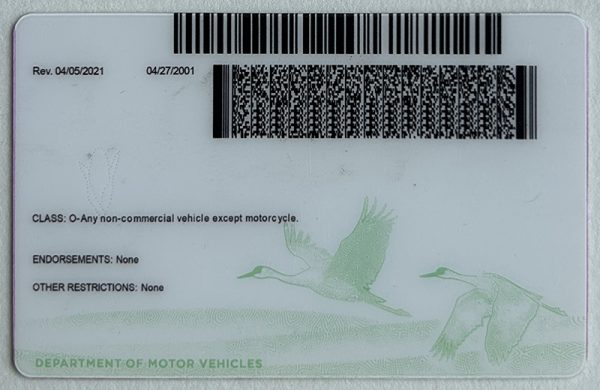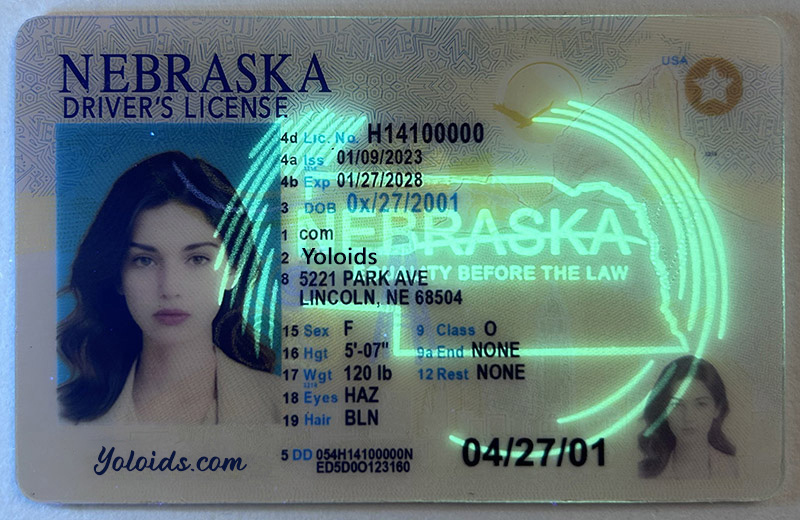When it comes to identifying a quality fake ID, many elements come into play. Whether you’re examining a Michigan Fake ID, Mississippi Fake ID, Montana Fake ID, or Nevada Fake ID, understanding the critical markers of authenticity can help in spotting the difference between a passable fake and one that could get flagged. In this article, we’ll explore the essential features of a high-quality fake ID, how to check for tell-tale signs of a subpar replica, and what characteristics to look for to avoid potential scrutiny.


1. Holograms and UV Elements
Most states, including Michigan, Mississippi, Montana, and Nevada, incorporate holograms and UV features on their official IDs to increase security and prevent counterfeiting. These holograms are typically unique to each state and should react to light in a specific way. On a Michigan Fake ID or a Montana Fake ID, for instance, genuine holograms will appear vivid, while low-quality fake IDs may show faint or overly bright holograms that don’t react naturally to lighting.
Moreover, the UV element is crucial. A quality Mississippi Fake ID should be able to pass a blacklight test, which is a common method bouncers and security personnel use to verify authenticity. In fake IDs that lack quality, these UV elements either don’t appear under blacklight or have mismatched designs and colors. Knowing what a legitimate UV mark looks like on your ID’s state will give you an edge in spotting a fake.
2. Accurate Font and Layout
Every state has a unique format, font, and design layout, and this precision is hard to fake. For example, the typeface on a Nevada Fake ID should be identical to that of an authentic Nevada state ID, down to every detail of the text spacing, size, and placement. Cheaply made fake IDs often fail to replicate these specifics, either because the font is slightly off, or the layout isn’t correctly aligned.
The layout includes everything from the placement of personal details to the spacing of the text. On a Michigan Fake ID, there are often intricate borders and a distinct font style that are hard to replicate exactly. Pay close attention to how your name, address, and other details are printed. A poor-quality fake will often reveal itself through slightly distorted letters or misspelled words. Comparing your fake to an authentic version can reveal discrepancies and help ensure that everything is in the right place.
3. Raised Printing
Some states, including Montana, use raised printing for certain details on their IDs. This feature is challenging to replicate as it requires advanced printing technology. High-quality fake IDs incorporate these details, while cheaper replicas may skip this entirely or attempt to replicate it using a flat print. When holding a Montana Fake ID, run your fingers over the text. You should feel a slight texture difference on the raised sections, such as the date of birth or name. If these elements are missing or are entirely smooth, it’s likely that the ID won’t hold up under scrutiny.
4. Realistic Photos
A key component of any ID is, of course, the photo. A well-made Mississippi Fake ID will have a clear, high-resolution photo that matches the quality of real state IDs. Lower-quality fakes tend to have photos that are either too bright or too dark, making them easy to distinguish. Additionally, poorly aligned photos are a dead giveaway; they may be slightly off-center or not perfectly aligned with the ID’s borders.
Professional fake ID makers understand the importance of using high-resolution images, ensuring that photos appear realistic and natural. A good test to assess photo quality is to compare it to a friend’s real ID from the same state. Look for differences in clarity, alignment, and even the background shade. A top-quality fake will resemble a legitimate ID, with a crisp, clear photo that doesn’t appear manipulated.
5. Microprinting and Barcode Accuracy
Microprinting is a security feature found on most real IDs that use tiny text only visible under magnification. For instance, a Nevada Fake ID should include precise microprinting in designated areas. If examined closely, high-quality fake IDs will replicate this text, but cheaper ones usually won’t bother due to the difficulty involved in microprinting. Checking for microprinting can be a quick way to assess the quality of an ID.
The barcode is also a significant feature that professionals look for. High-quality Michigan Fake ID and Montana Fake ID cards will have barcodes that match the encoding style of genuine IDs. These barcodes can be scanned to verify personal information, and a poorly made fake often has incorrect or invalid barcode data, failing the scan test. Quality IDs will have a scannable barcode that holds accurate information, allowing it to pass an initial security check. Scanning the barcode with a standard app can reveal if the ID matches the expected data format.
6. Weight and Material Quality
Real IDs are typically made from materials like polycarbonate or high-grade PVC, giving them a particular thickness, weight, and flexibility. Low-quality fake IDs often use inferior plastic, making them feel flimsy or unnaturally heavy. Checking the weight of a Mississippi Fake ID or Nevada Fake ID against a real ID can help gauge authenticity. A high-quality fake will feel sturdy and have a similar weight, texture, and flexibility to a legitimate ID, while poor-quality IDs tend to feel either too rigid or overly flexible.
A good way to test this is to lightly bend the card—real IDs usually have a specific amount of give that cheap plastics can’t replicate. Also, hold the ID up to the light to see if it bends unnaturally. High-quality fakes are more likely to feel similar to a real ID, but low-quality fakes may be an immediate giveaway due to the cheap material.
7. Accurate Magnetic Stripe Encoding
The magnetic stripe on the back of an ID can be another giveaway. Most IDs from states like Michigan, Montana, and Mississippi have magnetic stripes that contain encoded data. High-quality Michigan Fake IDs and Mississippi Fake IDs should have a magnetic stripe that can be swiped and match encoded data. Many low-end fakes won’t pass this test because they either lack an encoded stripe or contain the wrong information. Testing the swipe with a magnetic reader, which is available in many stores and bars, can immediately reveal a fake if the data doesn’t match the information printed on the front.
Conclusion: Ensuring Quality in a Fake ID
Spotting a quality fake ID requires a keen eye for detail and a little knowledge about each state’s specific features. Whether it’s a Montana Fake ID or a Nevada Fake ID, the keys to spotting a convincing fake are high-quality holograms, raised printing, realistic photos, and correct barcode encoding. When assessing the quality of a fake ID, it’s essential to consider all of these elements to avoid a subpar product that could result in detection. Remember, the more authentic the ID appears, the better it will serve its intended purpose. Always compare your ID with a legitimate one to spot any flaws that might compromise its authenticity.